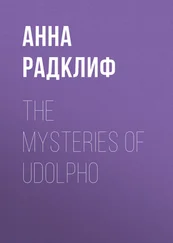61 53
62 54
63 55
64 56
65 57
66 58
67 59
68 60
69 61
70 62
71 63
72 64
73 65
74 66
75 67
76 69
77 70
78 71
79 72
80 73
81 74
82 75
83 76
84 77
85 78
86 79
87 80
88 81
89 82
90 83
91 84
92 85
93 86
94 87
95 88
96 89
97 90
98 91
99 92
100 93
101 94
102 95
103 96
104 97
105 98
106 99
107 100
108 101
109 102
110 103
111 104
112 105
113 106
114 107
115 108
116 109
117 110
118 111
119 112
120 113
121 115
122 116
123 117
124 118
125 119
126 120
127 121
128 122
129 123
130 124
131 125
132 126
133 127
134 128
135 129
136 130
137 131
138 132
139 133
140 134
141 135
142 136
143 137
144 138
145 139
146 140
147 141
148 142
149 143
150 144
151 145
152 146
153 147
154 148
155 149
156 150
157 151
158 152
159 153
160 154
161 155
162 156
163 157
164 158
165 159
166 160
167 161
168 162
169 163
170 164
François Grosjeanis Professor Emeritus of Psycholinguistics at Neuchâtel University, Switzerland. His publications on bilingualism include many articles and chapters as well as seven books: Life with Two Languages: An Introduction to Bilingualism (1982), Studying Bilinguals (2008), Bilingual: Life and Reality (2010), The Psycholinguistics of Bilingualism (with Ping Li; 2013), The Listening Bilingual: Speech Perception, Comprehension, and Bilingualism (with Krista Byers-Heinlein, 2018), Life as a Bilingual (2021), and Parler plusieurs langues: Le monde des bilingues (2015). He is a Founding Editor of the journal Bilingualism: Language and Cognition and was its first Coordinating Editor. In 2019 he published his autobiography, A Journey in Languages and Cultures: The Life of a Bicultural Bilingual .
Every field of study has issues that remain unresolved, and the field of bilingualism is no exception. Over the years, as I was involved in research on bilinguals or writing about them, I would earmark questions that I needed to come back to at some point. Among these were: Who is bilingual given that there is such a discrepancy in definitions? How many bilinguals are there? How do infant bilinguals who acquire both languages simultaneously manage to separate them? Why do some bilinguals have an accent in one of their languages whereas others do not? Can you lose a language completely, and this at any age? Is language processing selective or non-selective? Do you really change your personality when you change language? What does it mean to be both bilingual and bicultural?, and so on. Of course, answers to these questions have been proposed by scholars over the years but never totally satisfactorily. This is because the evidence is either absent or unclear, new studies have contradicted earlier ones, the underlying theories diverge, and so on.
In this book, we will examine eleven unresolved issues and, based on past and recent research, we will give the best explanation we have for them. There will be four parts, each part containing two or three chapters. In Part I, Bilingual Adults and Children, the first chapter concerns who is bilingual. We will examine how bilinguals and bilingualism have been characterized and how this has changed over time. To help us do so, we will call on surveys, dictionary entries, as well as definitions proposed by language scientists. We will also discuss important characteristics of bilingual people and see how self-report questionnaires deal with them. The second chapter will address the question of how many bilinguals there are. We will examine why it is so difficult to obtain exact figures and will concentrate on a few national censuses that offer sufficient data from which numbers of bilinguals can be estimated. Finally, the third chapter concerns one of the most intriguing phenomena in bilingualism: how do infants who acquire two or more languages simultaneously manage to separate them? Even though their task seems daunting, a number of studies indicate how they start doing so perceptually as well as pragmatically.
In Part II, Linguistics and Neurolinguistics, we will start with the issue of having an accent in a language. After examining the phonetic and prosodic characteristics of accents, we will present the main factors that account for having an accent – from traditional ones such as maturational aspects to more recent ones such as type and amount of language input. We will also address having an accent in a third language. This will be followed by a chapter on language loss, in adults and in children. As concerns adults, we will cover characteristics of attrition, and go in search of factors that account for language loss. For children, we will describe experimental studies that attempt to see if there are remnants of a language forgotten in very early childhood. We will end with two studies, already quite old, that appear to show that a lost language may be recovered under hypnosis. Finally, the third chapter in this part concerns bilinguals with aphasia, that is those bilinguals who suffer language and speech impairment due to brain damage. We will discuss patterns of language recovery and the factors that account for them. We will also examine language mixing in the speech of aphasic bilinguals and show that it is not always a sign of pathology.
Part III, Language Use and Language Processing, examines first how bilinguals call on their languages, separately or together, when interacting with others. How is the language of interaction – the base language – chosen, and what factors govern whether the other language is brought in in the form of code-switches and borrowings? This will be followed by a chapter on what a bilingual’s languages are used for. Bilinguals usually acquire and use their languages for different purposes, in different domains of life, with different people. This has a very real impact, not yet fully recognized, on language production and perception, language acquisition, memory, mental calculation, and so on. Finally, the third chapter in this part will deal with the question of whether language processing is selective or non-selective when only one language is being use. In other words, when bilinguals perceive and produce just one language, is only that language involved, or do(es) the other(s) intervene? Experimental research these last 20 years has brought answers to these questions.
The last part, Part IV, deals with Biculturalism and Personality. In the first chapter, we describe bilinguals who are also bicultural: how they can be defined, how they become bicultural, how they adapt their behaviors to different cultural situations, and how they identify with their cultures. And in the second chapter, we attempt to answer a question often asked: do bilinguals change personalities when they change language? We will review opinions and beliefs, examine the results of past and present studies, and look at variables that are involved in feeling different when using different languages. We will end with an explanation that finally solves this enigma.
Two points need to be made here. First, the book has been written so that each chapter is self-contained: it raises an issue and then discusses the research that has been done to help solve it. When information that is required is given in another chapter, it is evoked succinctly in the chapter being read and then a reference is given to the other chapter. The second point is that bilingual adults and children are discussed together in every chapter unless there is a reason to separate them. This is the case, for example, in Chapter 5on language loss where the larger of the two parts concerns children. And, of course, Chapter 3on language separation is wholly dedicated to them.
Читать дальше












